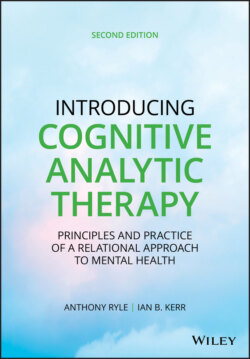Читать книгу Introducing Cognitive Analytic Therapy - Anthony Ryle - Страница 18
CAT Is an Integrated Model
ОглавлениеOne source of CAT was a wish to find a common language for the psychotherapies. While there is a place for different perspectives and different aims in psychotherapy, the use by the different schools of ostensibly unrelated concepts and languages to describe the same phenomena seems absurd. It has resulted in a situation where discussion is largely confined to the parish magazines of each of the different churches or to the trading of disparaging insults between them. Despite the growth of interest in integration and the spread of technical eclecticism in recent years, the situation has not radically altered. CAT remains, we suggest, one of the few models to propose a comprehensive theory that aims to address and integrate the more robust and valid findings of different schools of psychotherapy as well as those of related fields such as developmental psychology and infant observational research, neuroscience, epidemiology, and sociology.
The process of integration in CAT originated in the use of cognitive methods and tools to research the process and outcome of psychodynamic therapy. This involved the translation of many traditional psychoanalytic concepts into a more accessible language based on the new cognitive psychology. This led on to a consideration of the methods employed by current cognitive‐behavioral and psychodynamic practitioners. While cognitive‐behavioral models of therapy needed to take more account of the key role of human relationships in development, in psychopathology, and in therapy, their emphasis on the analysis and description of the sequences connecting behaviors to outcomes and beliefs to emotions made an important contribution. Psychoanalysis overall offered three main important understandings, namely its emphasis on the relation of early development to psychological structures, its recognition of how patterns of relationship derived from early experience are at the root of most psychological distress and difficulty, and its understanding of how these patterns are repeated in, and may be modified through, the patient–therapist relationship.
Neither cognitive nor psychoanalytic models, however, appeared to acknowledge adequately the extent to which individual human personality or the “Self” is formed and maintained through relating to and communicating with others and through the internalization of the meanings developed in such relationships, meanings which reflect the values and structures of the wider culture. In CAT, the Self is seen to be developed, constituted, and maintained through such interactions.
